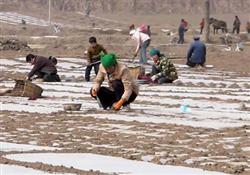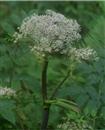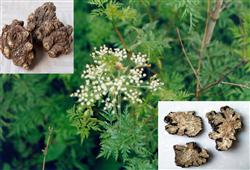What should we pay attention to in the cultivation of Angelica sinensis with plastic film mulching?

What should we pay attention to in the cultivation of Angelica sinensis with plastic film mulching? Please give guidance on plastic film mulching cultivation of Angelica sinensis should pay attention to the following points: 1. Select stubble land. The Eryin terraced field with rich and loose, deep soil layer and high content of organic matter was selected. It is better to use wheat stubble and avoid continuous cropping. The previous stubble ploughed deeply, combined with cultivated land before sowing, fertilized and ridged. 2. Apply sufficient base fertilizer. 5000 kg of farm manure and 100 kg of oil residue were applied per mu, combined with ploughing before sowing and concentrated deep application. Fertilizer application of diammonium phosphate 20kg / mu, ammonium nitrate 10kg / mu, combined with ridge concentrated application into the ridge. 3. Ridging and film mulching. Choose 70-80 cm wide, 0.008 cm or 0.005 cm thick ultra-thin film, strong micro-film, 3-5 kg per mu. Requires ridge width of 60 cm, ridge spacing of 40 cm, ridge height of 10 cm, so that straight, flat, light. Immediately after ridging, film mulching is required to be extended, solid and strict. 4. Planting in time. The day before planting, after shaking the selected superior seedlings in the pure land, dip 1.5 kg of Angelica sinensis root into the roots per mu, let the medicine solution wrap the seedlings, dry them and plant them, or use 5 kg line phosphorus granules per mu to 50 kg 60 kg of fine sand and sprinkle them on the top of the seedlings during transplanting. Two rows are planted in each ridge, the row spacing is 40 cm, the plant spacing is about 25 cm, and there are about 5000 seedlings per mu. When planting, punch holes in the ridges, holes staggered, showing a triangle, and then move Angelica seedlings into the holes, two seedlings are planted in each hole, the top bud of Angelica seedlings is 2cm away from the plastic film, compacted with fine soil and sealed tightly. 5. Release seedlings in time. About 10 days after transplanting, iron nails can be used to break the hard soil layer at the top of the seedling in the early morning, and then sprinkle a little fine soil on the top of the seedling to prevent the buds from being burned by the sun. Click to get more Angelica planting technology click to get more medicinal material planting technology
- Prev

How to prevent early bolting of Angelica sinensis?
How to prevent early bolting of Angelica sinensis? Please introduce the method of Angelica sinensis, which is native to alpine mountain area and is a plant with low temperature and long sunshine. In ontogeny, vegetative growth to reproductive growth needs to go through two stages: vernalization stage (low temperature of 0 ℃) and light stage (long sunshine for more than 12 hours). So...
- Next

How does Angelica grow scientifically?
How does Angelica grow scientifically? Please give an introduction to Angelica sinensis planting can refer to the following methods: 1, land selection, soil preparation: choose a south-to-north half-shady and half-sunny slope, requiring loose soil and good structure. Lesser Fullness of Grain turned deeply in front of him once and broke the clod as a seedbed. The bed was 1 meter wide and the length varied with the terrain. Row from bed to bed.
Related
- Fuxing push coffee new agricultural production and marketing class: lack of small-scale processing plants
- Jujube rice field leisure farm deep ploughing Yilan for five years to create a space for organic food and play
- Nongyu Farm-A trial of organic papaya for brave women with advanced technology
- Four points for attention in the prevention and control of diseases and insect pests of edible fungi
- How to add nutrient solution to Edible Fungi
- Is there any good way to control edible fungus mites?
- Open Inoculation Technology of Edible Fungi
- Is there any clever way to use fertilizer for edible fungus in winter?
- What agents are used to kill the pathogens of edible fungi in the mushroom shed?
- Rapid drying of Edible Fungi

